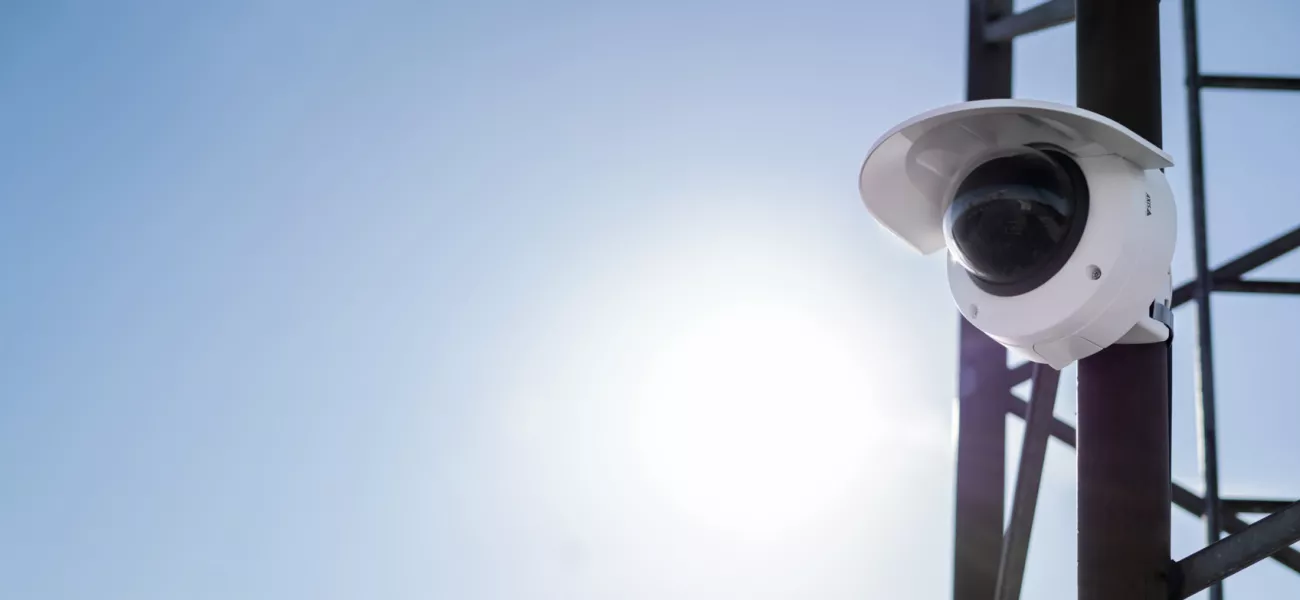
The technology behind video analytics deals with image data in a different way compared to human operators, and this changes priorities for image usability. However, typical attributes of image quality remain essential to achieve analytics performance. Axis image processing knowledge and expertise enable optimization of image quality and usability, ensuring surveillance performance for both the human eye, as well as analytics.
The impact of analytics on camera development
When surveillance cameras were first developed, the focus was to optimize viewing quality for the human operator. This original target remains crucial today, but over recent years, video analytics has become an increasingly important capability of surveillance cameras. As a result, the priorities of surveillance technology development have changed.
Video analytics can automatically trigger real-time alerts, which is crucial to optimize security and safety. The automatic detection and tracking of objects and identifying events is furthermore useful to find forensic evidence in an investigation. Analytics also has the potential to help organizations improve operational efficiency, and an overview of the data it provides can offer actionable insights to enhance processes.
However, the quality of analytics is only as good as the video it originates from. This means that to fully achieve the advantages, including accurate and reliable object detection and classification, optimizing video usability for analytics is crucial.
Contrasting image usability for human viewing and analytics processing
The key advantage of analytics is that it has a higher capacity to process large volumes of video compared to a human, and as a result, it can detect actions and classify objects at a much faster rate. To achieve this, analytics is based on computer vision technologies including deep learning-based AI, that analyze images and video in different ways compared to humans.
Humans obtain a contextual understanding of a video stream, and this capability allows us to more easily interpret and understand images and video - even when they are low quality, or if objects are partly obscured from view. However, the constraints of human viewing mean that an operator at the same time might be distracted by visual aspects such as noise that can impact viewing clarity.
Analytics, on the other hand, needs high image quality for accurate detection of objects and events, but the technology isn’t sensitive to the image’s visual appearance in the same way.

The importance of video usability for analytics
As high image quality is the basis for accurate video analytics, various factors can affect this processing capability. Significant among these is motion blur, caused by objects moving at high speed. While motion blur can be problematic for human viewing, the human can add context even if detail is partly lost. This means that if objects are very fast moving, the human viewer might be able to recognize them and make sense of the scene, while for analytics technology, this might not be possible. Therefore, it is necessary for a camera to be able to minimize motion blur to achieve good analytics performance.
An image with good contrast and sharpness can also improve analytics performance. Although analytics algorithms are usually designed to be less sensitive to image noise, a camera that has good low light performance in dark scenes, as well as a wide dynamic range with minimal artefacts in challenging light conditions, gives more accurate analytics performance.
Analytics also needs to perform in the real world, and this means that image usability must be achieved – both for analytics, as well as the human viewer - whatever the environmental conditions. To deal with high wind, image stabilization improves the accuracy of video analytics by minimizing the effect of camera vibration. Consideration over a camera’s physical installation setting, including aspects such as lighting conditions and weather protection, also has a significant impact on image usability. To ensure ongoing image quality, maintaining and keeping the camera clean is vital as well.
Optimizing image usability for analytics and the human viewer
Axis optimizes image usability for analytics with dynamic control by the camera over parameters such as shutter speed, gain, noise reduction, contrast, and sharpness. This enables the camera to automatically adjust to the conditions using Axis image processing. Optimizing these image parameters ensures a foundation for analytics performance on which further analytics capabilities can be developed – both by Axis as well as technology partners.
At the same time, as a human nearly always needs to view the video as well, whether in real time or post hoc analysis, ensuring high image quality for human viewing remains important. This means image parameters also need to be sufficiently natural to ensure clarity. As a result, Axis cameras are optimized out of the box for analytics as well as human viewing. While this is crucial for video surveillance performance, it also reduces the need for specialist expertise in set-up, as well as minimizing the time and cost of commissioning.
By developing its own camera SoC (system on a chip), ARTPEC, Axis has the knowledge and means to optimize video processing for optimal image quality and usability, both for analytics as well as human viewing.
Holistic approach to camera design
To ensure high performance analytics providing actionable insights that can improve safety, security, and operational efficiency, all aspects of camera design are important. This holistic development approach is crucial, both to optimize image usability for analytics, as well as ensuring high image quality for the human eye.